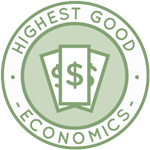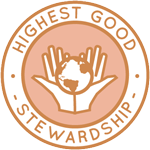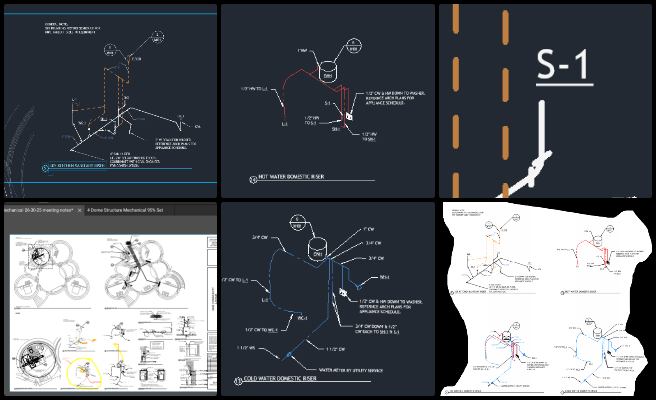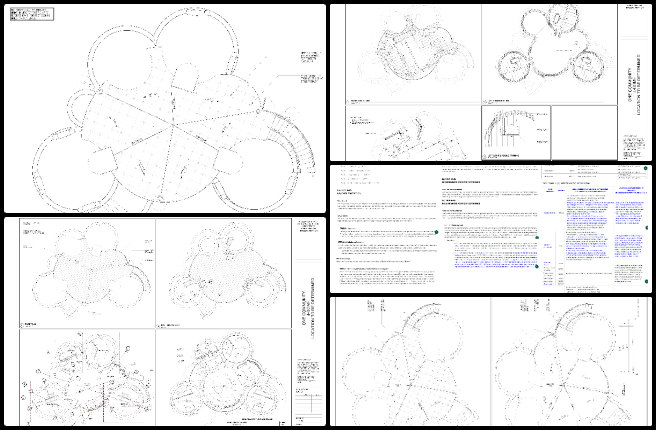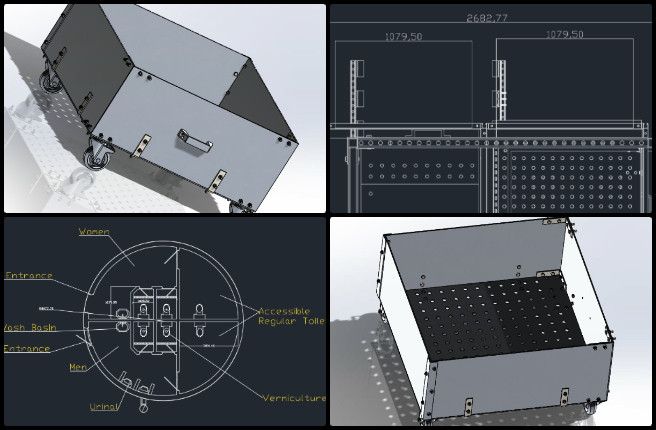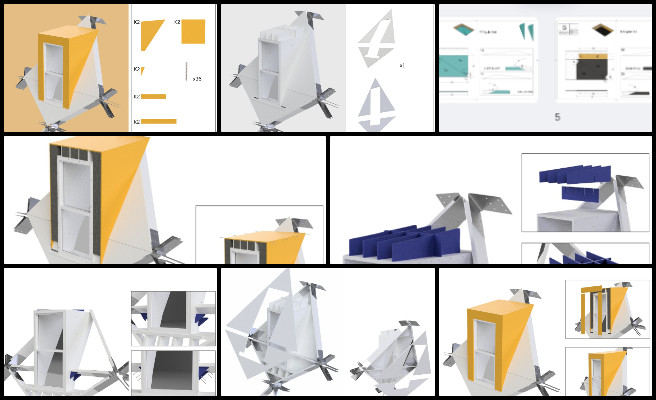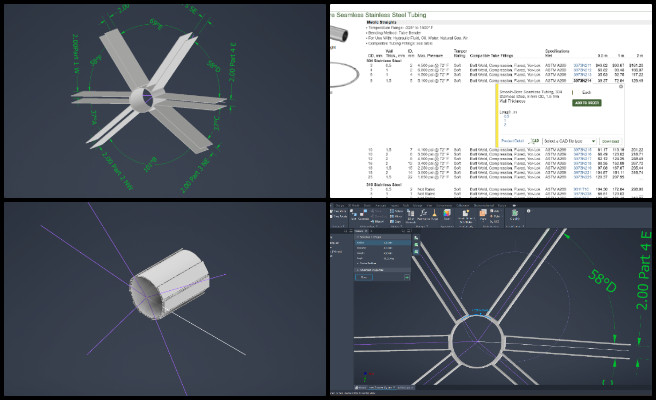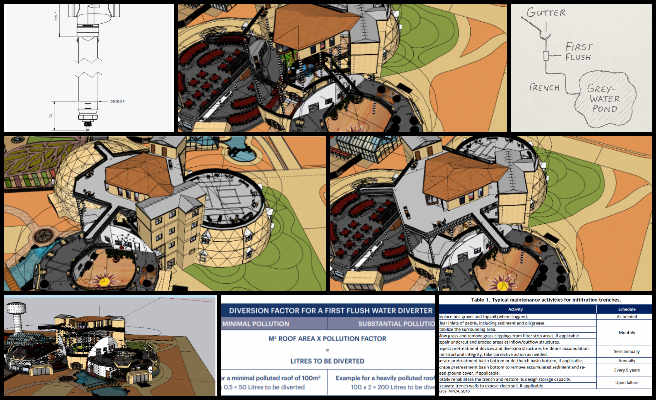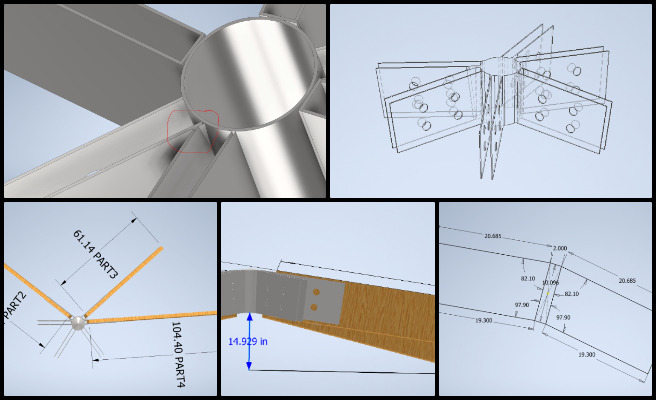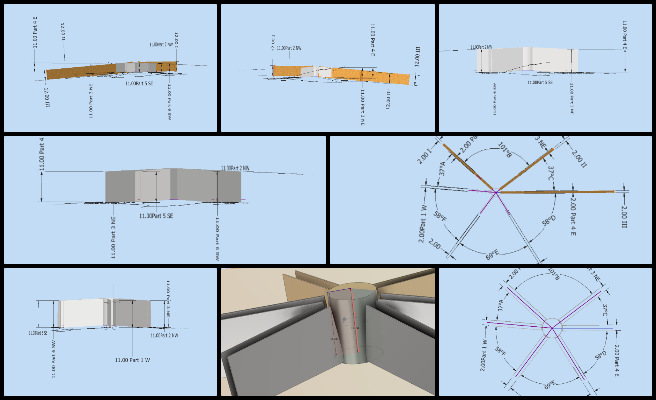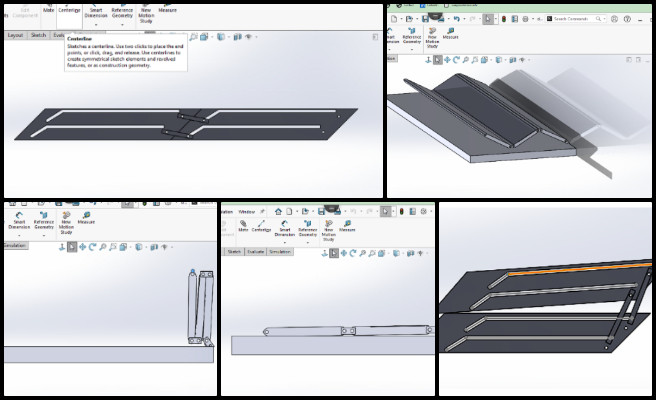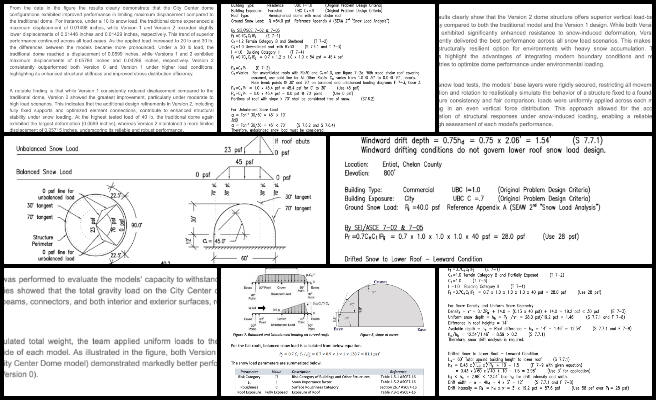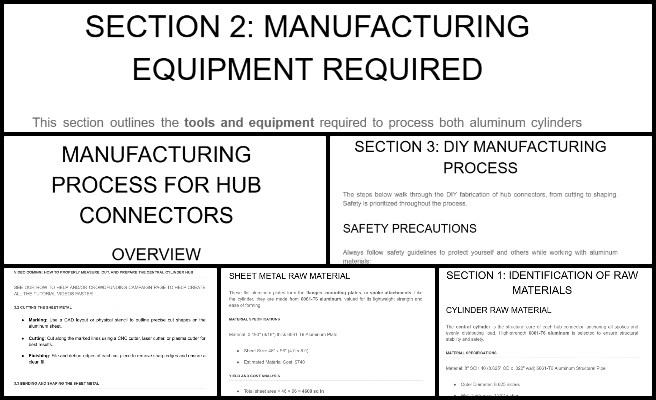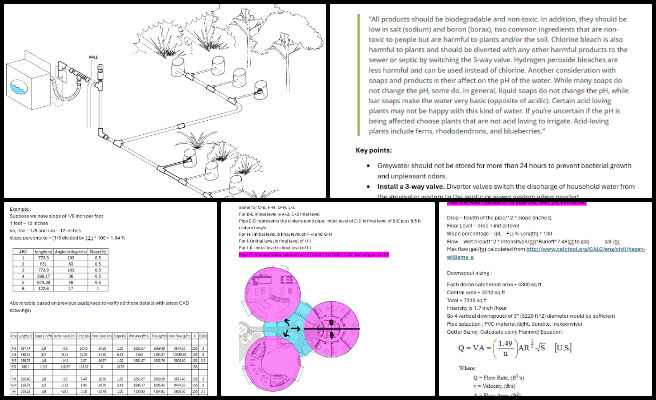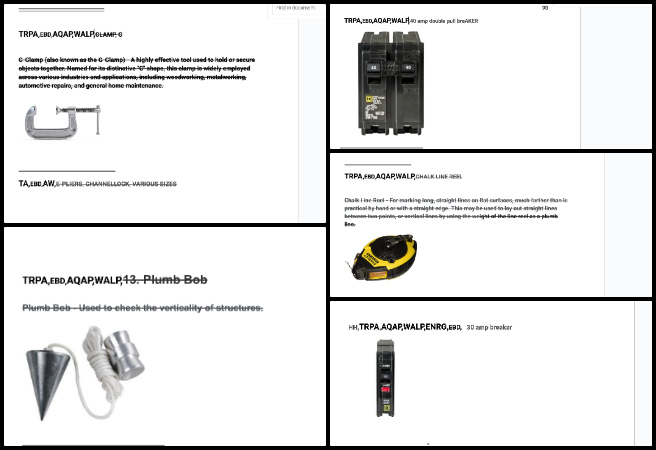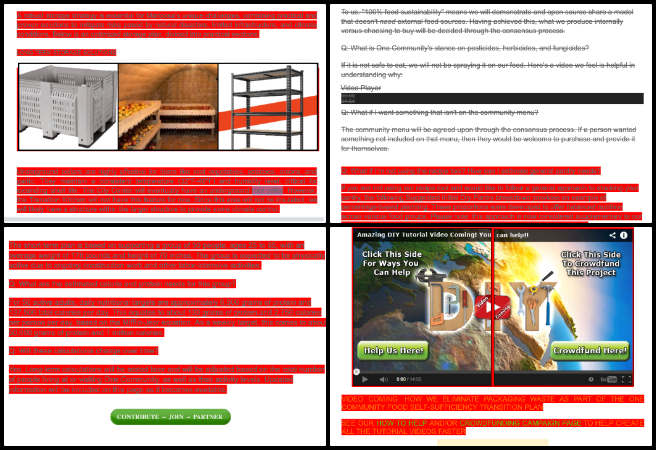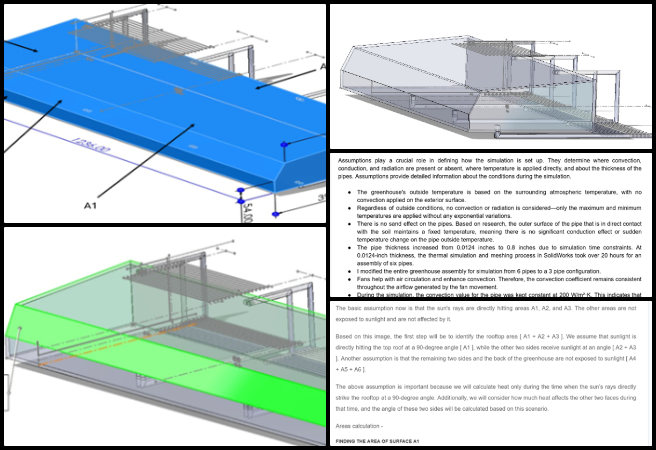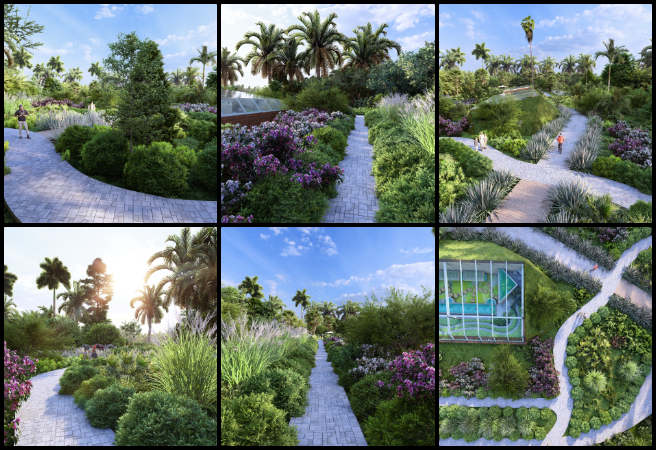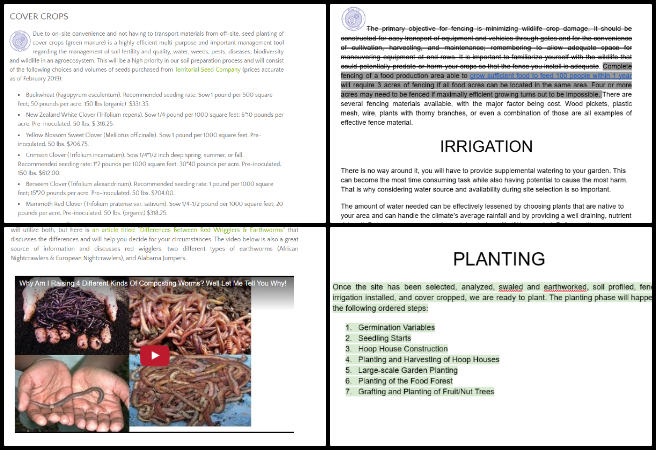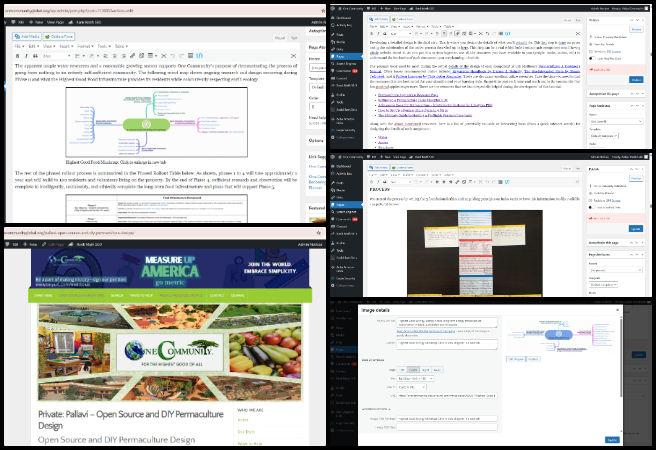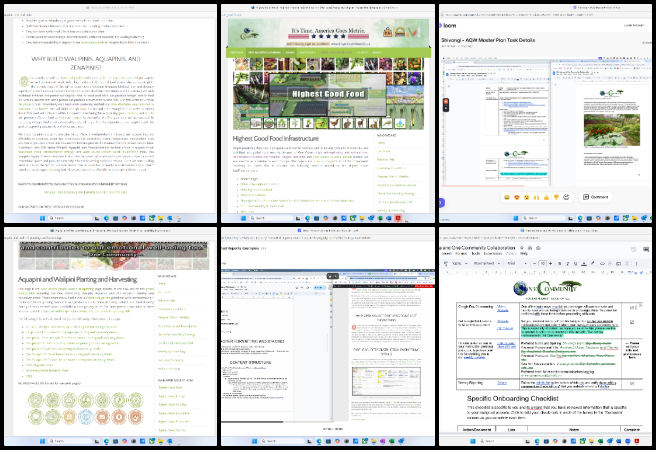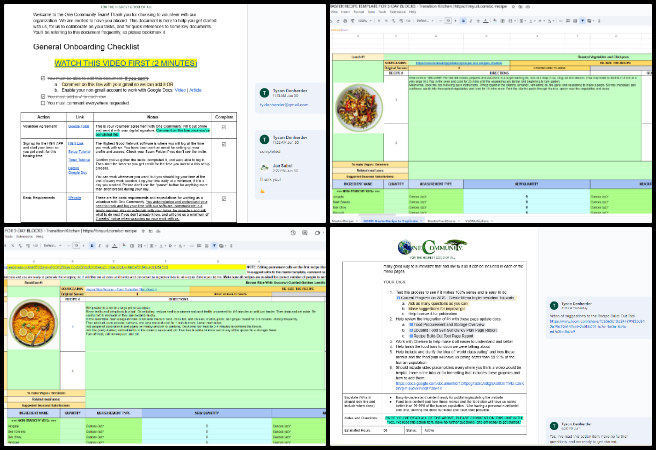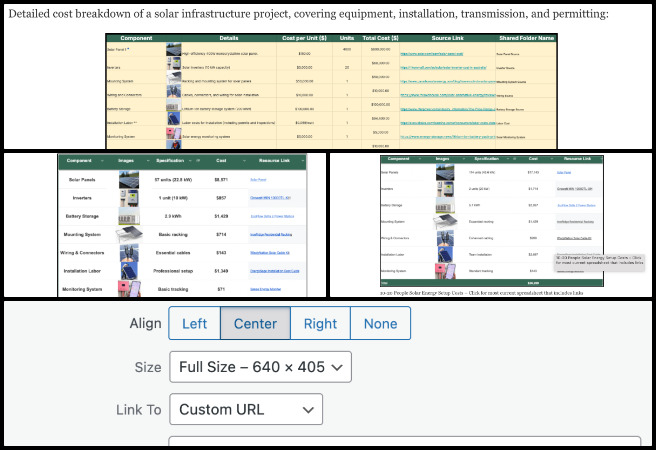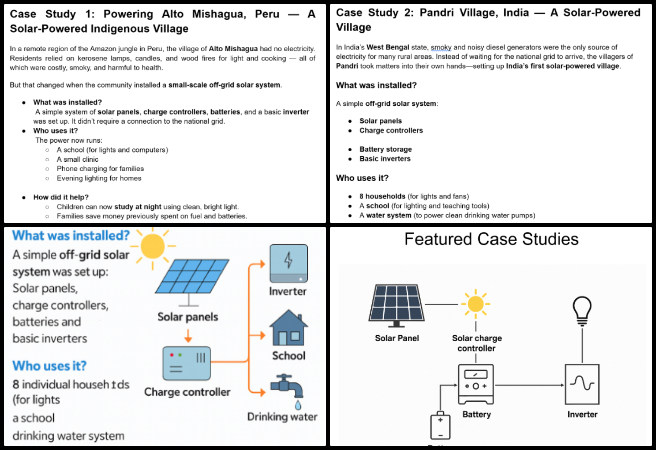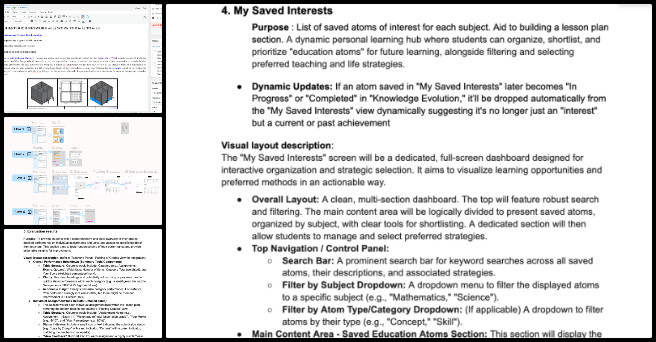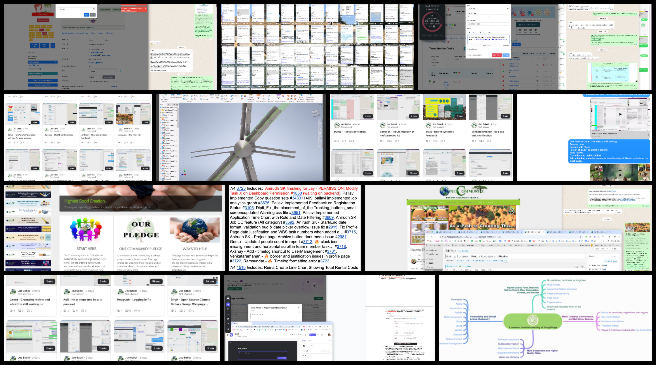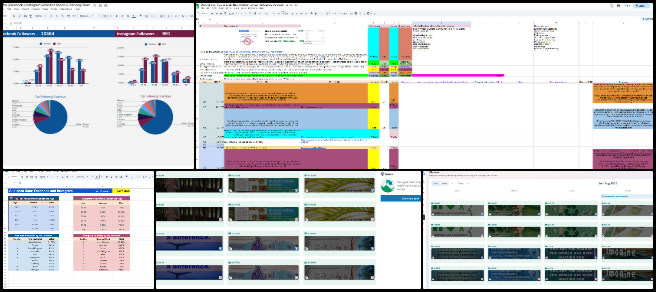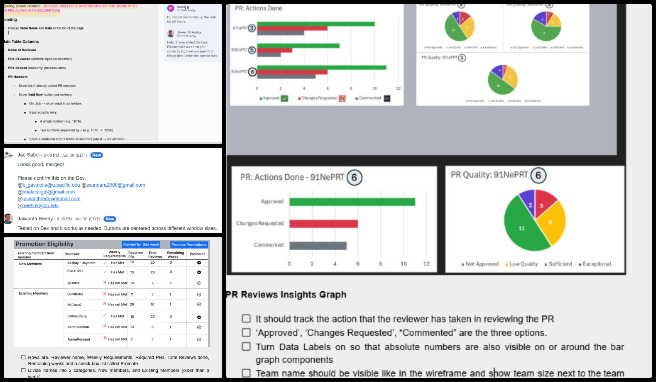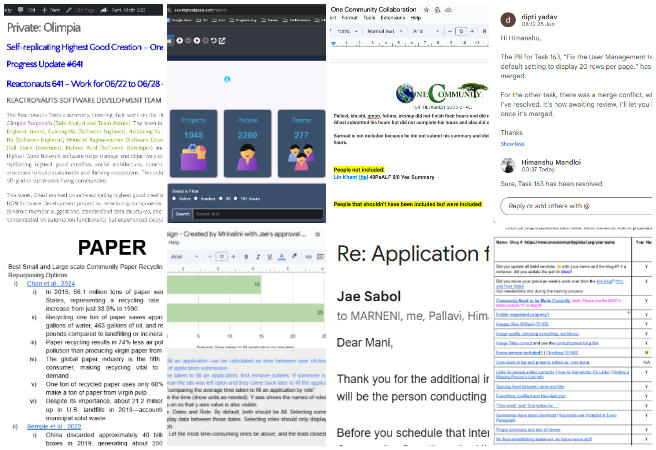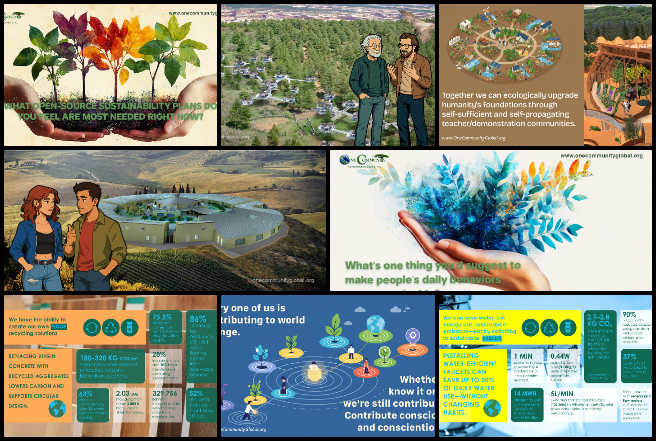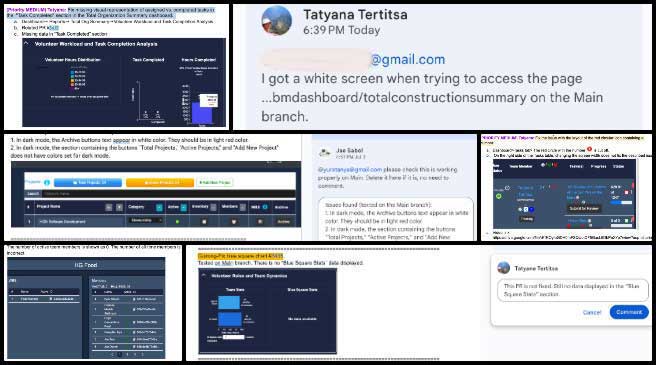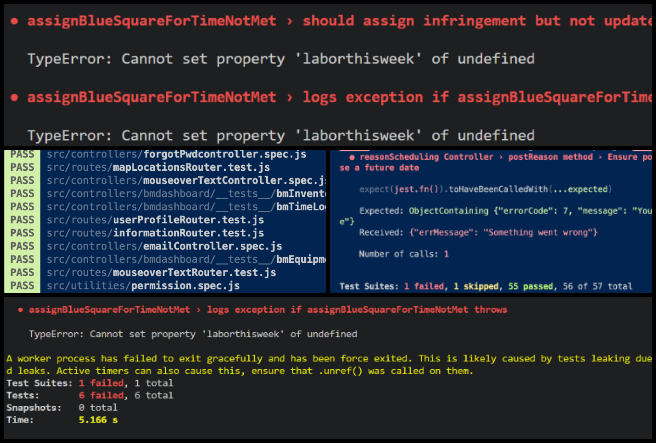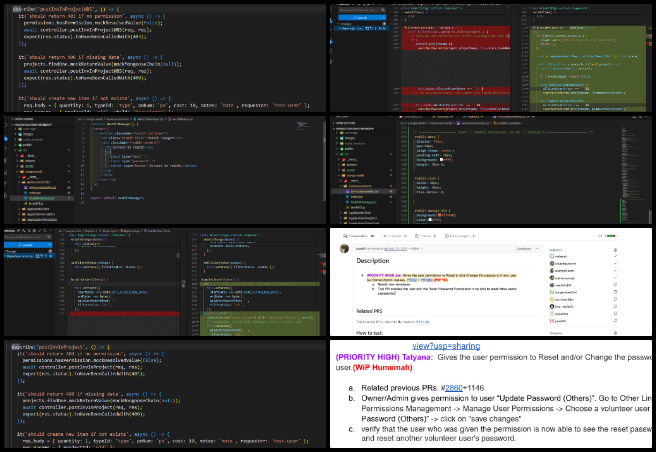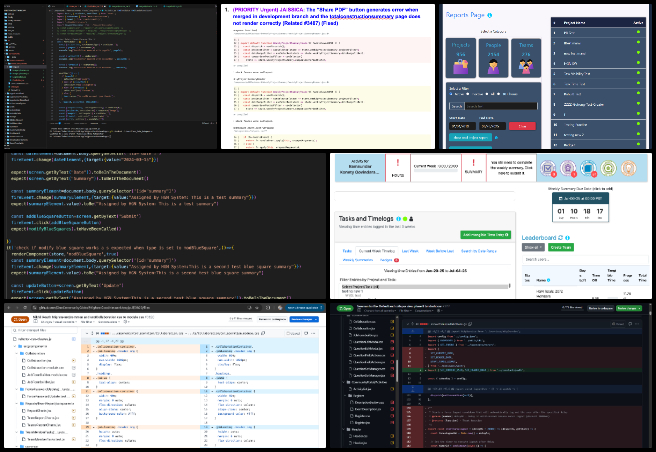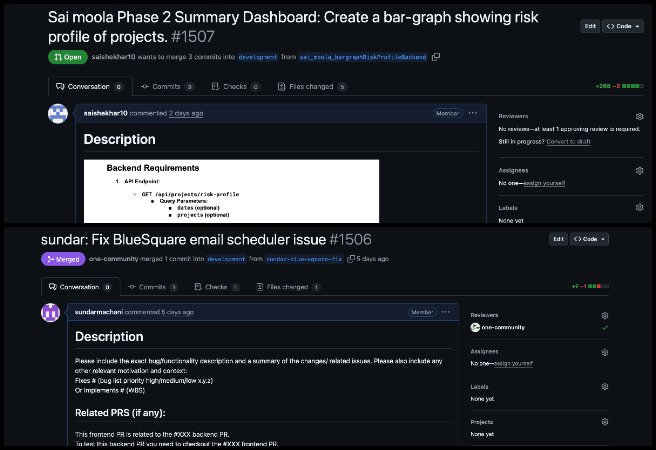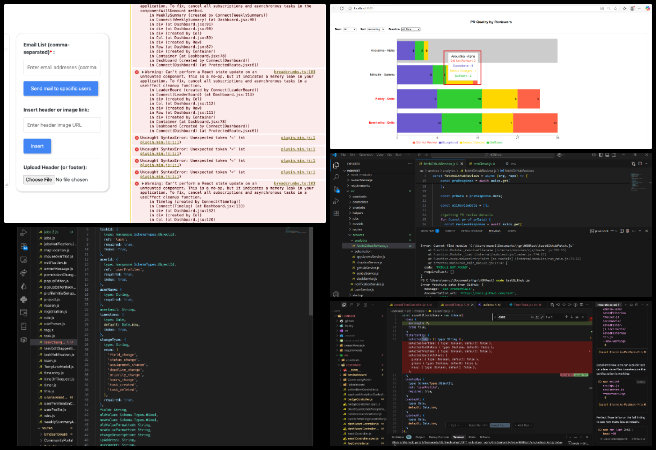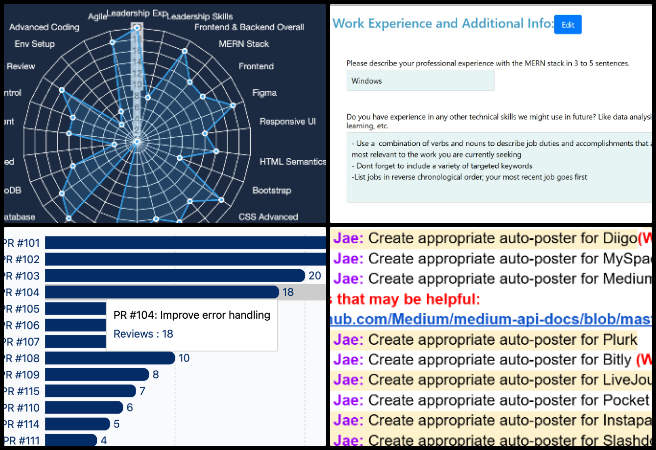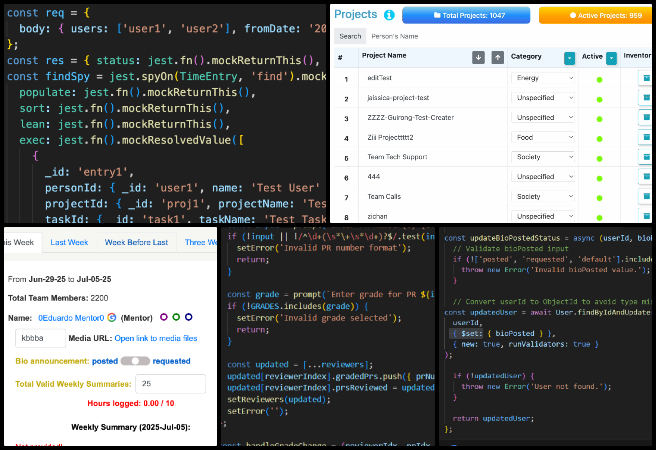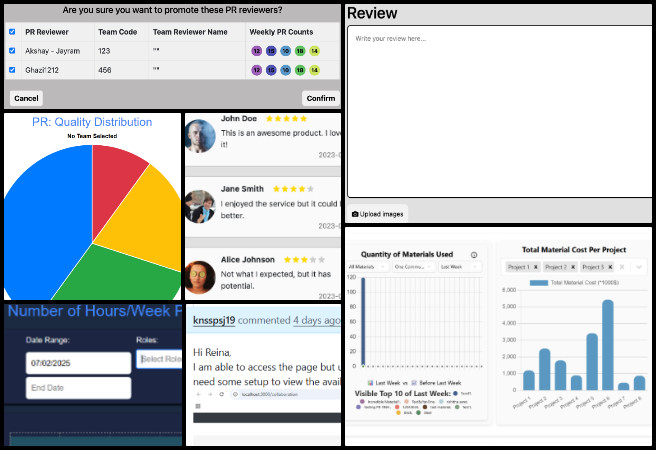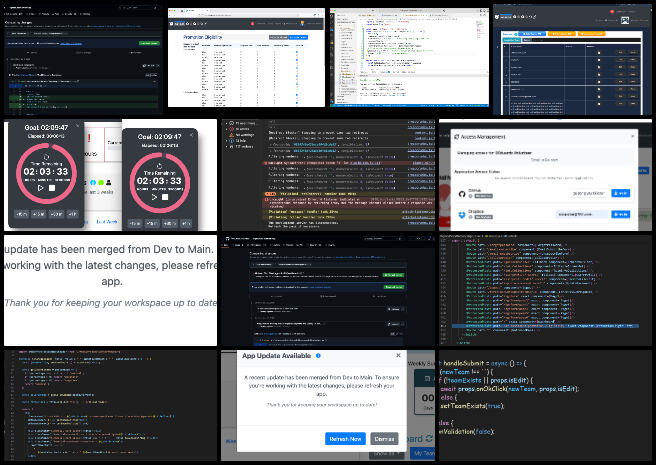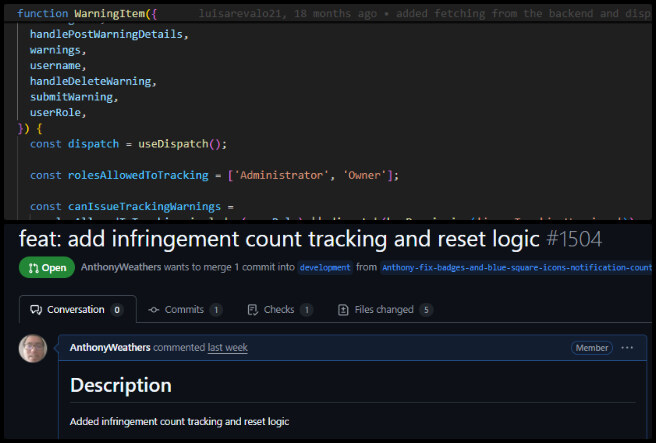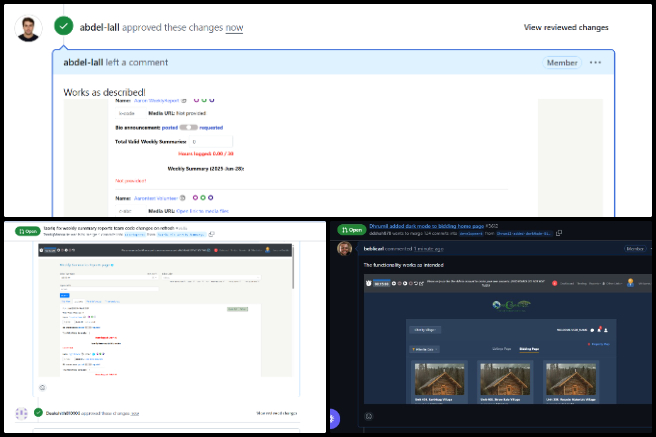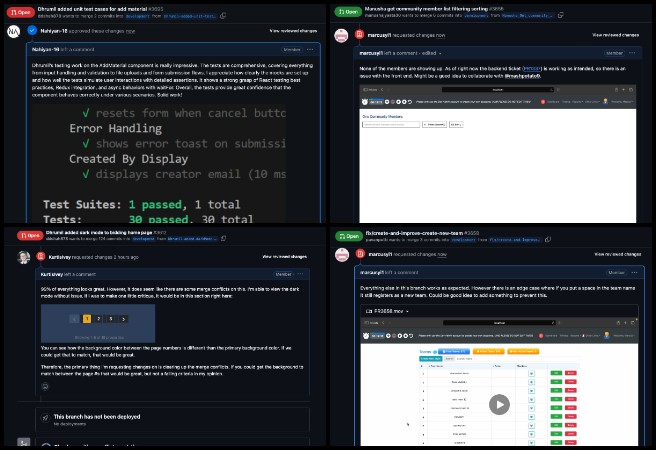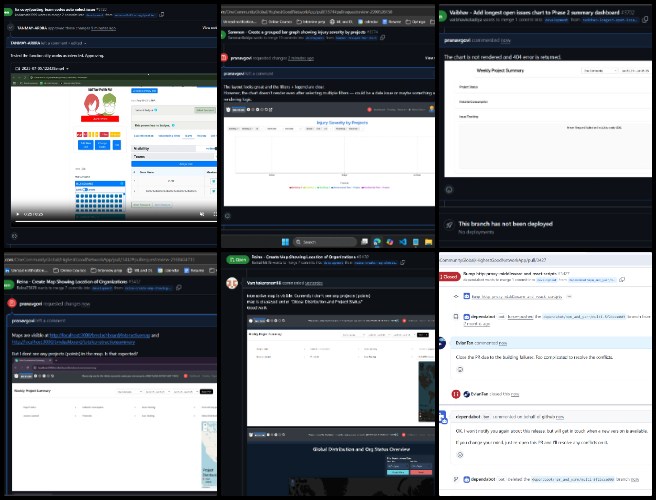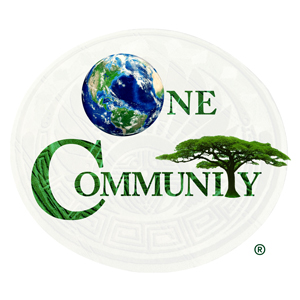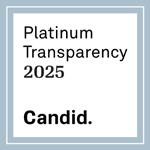Widespread and Lasting Eco-lifestyle Access – One Community Weekly Progress Update #642
At One Community, we are demonstrating widespread and lasting eco-lifestyle access through sustainable approaches to food, energy, housing, education, economics, social architecture, fulfilled living, and global stewardship practices. Everything we create is open source and free-shared by our all-volunteer team to support global collaboration and the development of teacher/demonstration hubs worldwide. By evolving sustainability into something self-replicating and accessible to all, we’re helping regenerate our planet and create a world that works for everyone—guided always by the values of The Highest Good of All.
- Here’s our project overview
- Here’s our world-change methodology
- Here’s how this becomes self-replicating
- Here’s how we are open source and free-sharing all the do-it-yourself designs
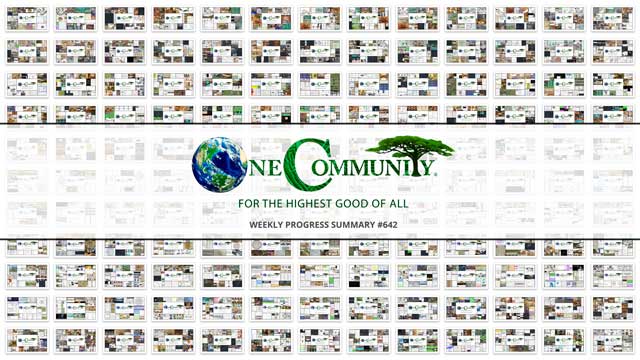
OUR MAIN OPEN SOURCE HUBS
Click on each icon to be taken to the corresponding Highest Good hub page.
One Community’s physical location will forward this movement as the first of many self-replicating teacher/demonstration communities, villages, and cities to be built around the world. This is the July 7th, 2025 edition (#642) of our weekly progress update detailing our team’s development and accomplishments:
Widespread and Lasting Eco-lifestyle Access
One Community Progress Update #642
DONATE | COLLABORATE | HELP WITH LARGE-SCALE FUNDING
CLICK HERE IF YOU’D LIKE TO RECEIVE AN EMAIL EACH WEEK WHEN WE RELEASE A NEW UPDATE
YOU CAN ALSO JOIN US THROUGH SOCIAL MEDIA
ONE COMMUNITY WEEKLY UPDATE DETAILS
HIGHEST GOOD HOUSING PROGRESS
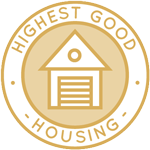 One Community is demonstrating widespread and lasting eco-lifestyle access through Highest Good housing that is artistic and beautiful, more affordable, more space efficient, lasts longer, DIY buildable, and constructed with healthy and sustainable materials:
One Community is demonstrating widespread and lasting eco-lifestyle access through Highest Good housing that is artistic and beautiful, more affordable, more space efficient, lasts longer, DIY buildable, and constructed with healthy and sustainable materials:
- Learn about: Our Upcoming Crowdfunding Campaign
- Learn about the different village models: 7 Sustainable Village Models
- Visit the open source portals for the first two: Earthbag Village OS Hub | Straw Bale Village OS Hub
This week, Adil Zulfiquar (Engineer) continued updating the Vermiculture Toilet website content by adding the Ventilation System Design for the Vermicomposting Eco-Toilet Space, ensuring it aligned with current ventilation recommendations and integrated with the overall vermiculture system information. In addition, he prepared a detailed task list for the handoff document outlining the next steps, including work related to the liquid drainage and filtration system, heating and cooling integration, sensor installation layout, and the remaining components of the vermiculture system. One Community’s open source launch of widespread and lasting eco-lifestyle access begins with Earthbag Village, the first of seven planned villages, each designed to provide housing. See below for some of the pictures related to this work.
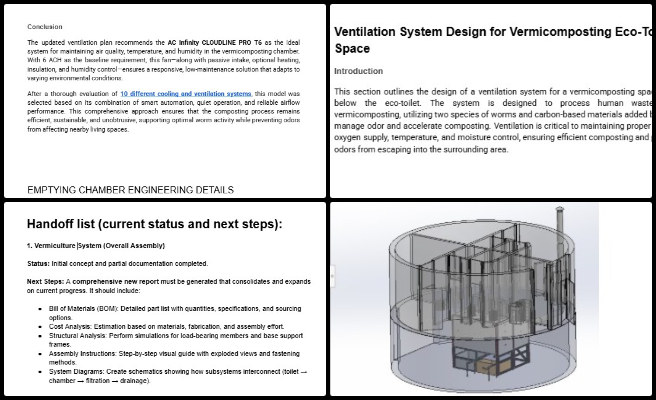
Derrell Brown (Plumbing Designer) continued working on the Earthbag Village 4-dome home plumbing and mechanical details. He coordinated with Michaela to address follow-up items related to finalizing the plumbing plans, including analyzing the plumbing wall in an isometric format for improved clarity. Following the discussion, he updated comments received, revised sanitary lines to match the floor plan, and adjusted the hot and cold water riser diagrams for consistency. Derrell then plotted two sets of the drawing, one in grayscale and one in color, for clarity. One Community’s open source launching of widespread and lasting eco-lifestyle access begins with Earthbag Village, the first of seven planned villages providing housing. See below for some of the pictures related to this work.
Karthik Pillai (Mechanical Engineer) continued working on the ongoing report for the Earthbag Village 4-dome cluster roof project, focusing on gathering relevant online resources and references that support the final design approach for the roof structure. He also started developing a render image intended for inclusion in the report, which is still in progress and will be completed in the following weeks. In addition, he revisited the finite element analysis and carried out reruns with more detailed parameters to enhance the accuracy of the structural assessment. On the Vermiculture Team, he is now managing multiple components of the project, including finalizing the design of the drawer and making required modifications to improve its functionality. Additionally, Karthik is also working on completing the design and implementation of the waste dumping mechanism, along with drafting the report that outlines the Unistrut assembly used in the system. As the first of seven planned villages, the Earthbag Village provides the initial housing within One Community’s open source designs for widespread and lasting eco-lifestyle access. See the work in the collage below.
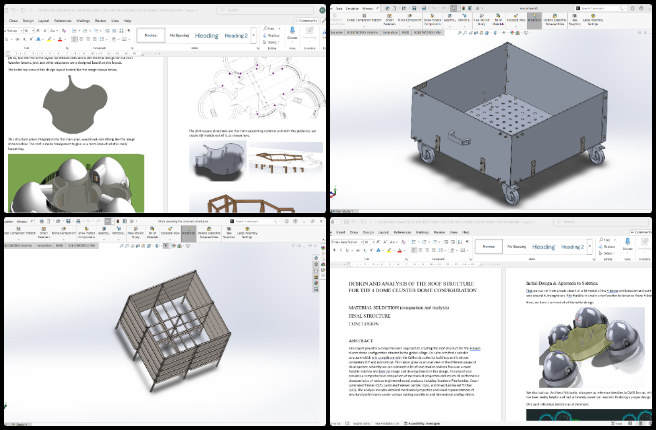
Ketsia Kayembe (Civil Engineer) continued working on the elevation drawings for the three-dome structure of the Earthbag Village. This week, she completed the drawings by midweek and incorporated feedback from Rumi to revise the files accordingly. Ketsia also began developing the window and door details for the same structure by gathering the necessary information to update the AutoCAD files and advance them to a construction-ready level.One Community’s open source framework of widespread and lasting eco-lifestyle access begins with Earthbag Village, the first of seven planned villages providing housing. See below for some of the pictures related to this work.
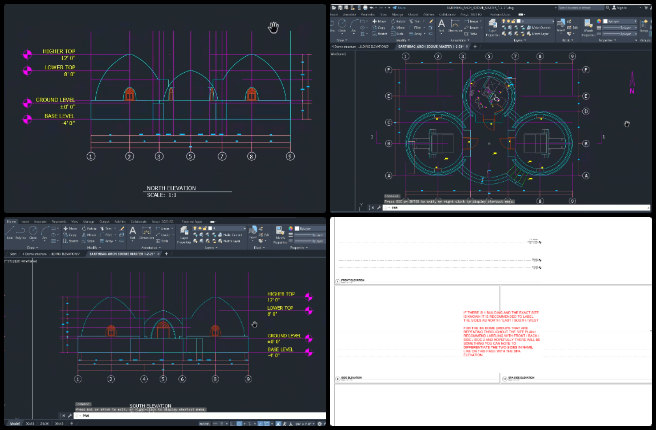
Michaela Silva (Architect) continued working on finalizing the interior of the Earthbag Village. She modeled the roof decking pedestal system and framing on top of the rigid insulation and cover board. During this process, adjustments were made to the locations of the insulation slopes and roof drains to ensure that the pedestals are positioned around the drains with appropriate framing to protect them. The Earthbag Village is the first of seven villages to be built as part of One Community’s open source model for widespread and lasting eco-lifestyle access. See her work in the collage below.
Tejas Chhajer (Mechanical Engineer) continued working on the mechanical and plumbing aspects of the Vermiculture Toilet, focusing on the vermi pit where sludge is processed. He analyzed options for an openable and lockable side drawer, chose a hinge assembly for the drawer’s movement, and selected a latch with a bolt mechanism to secure the drawer when closed. One Community’s open source launch of widespread and lasting eco-lifestyle access begins with Earthbag Village, the first of seven planned villages providing housing. See below for some of the pictures related to this work.
DUPLICABLE CITY CENTER PROGRESS
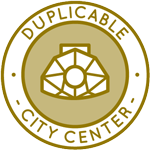 One Community is demonstrating widespread and lasting eco-lifestyle access through a Duplicable and Sustainable City Center that is LEED Platinum certified/Sustainable, can feed 200 people at a time, provide laundry for over 300 people, is beautiful, spacious, and saves resources, money, and space:
One Community is demonstrating widespread and lasting eco-lifestyle access through a Duplicable and Sustainable City Center that is LEED Platinum certified/Sustainable, can feed 200 people at a time, provide laundry for over 300 people, is beautiful, spacious, and saves resources, money, and space:
- Learn about this building and it’s function: Duplicable City Center Open Source Hub
This week, Andrew Chen (Industrial Designer) continued working on the Dormer second-floor window for the Duplicable City Center. He completed the first version of the step-by-step assembly instruction slides and made improvements to the slide layouts and renders to ensure the information flowed consistently and was easy to understand. He also sent the updated materials to Jae for feedback, including the first version of the assembly instructions and the second version of the material drawings. The Duplicable City Center highlights One Community’s open-source work to provide widespread and lasting eco-lifestyle access. Browse the visuals below.
Ayushman Dutta (Mechanical Engineer) focused on analyzing hub connector pipe dimensions from the existing CAD files to determine optimal dimensions and angles for the new design. He researched pipe material availability in both the US and global markets, examining metric specifications and thickness options as outlined in the materials document. Ayushman investigated various bolting options and worked to identify the optimal diameter for holes and bolt configurations. He also examined whether washers would be required for attaching spokes to the cylinder pipe on both sides of the connection. Throughout the week, he continued developing his understanding of the tolerances needed for the hub connector design and evaluated different material specifications to ensure the design would be manufacturable with readily available components. One Community’s open-source Duplicable City Center advances widespread and lasting eco-lifestyle access for all. Check out the photos below.
Lokesh Mali (Mechanical Engineer) focused on early-stage planning and design refinement for the rain- and grey-water systems. He explored the SketchUp roof model in depth, reviewed layer organization, and identified all catchment-zone boundaries and gutter tie-in points. After meeting with Vineela for CAD orientation, he refined the gutter-sizing spreadsheet using IPC 2024 tables and confirmed flow capacities across the zones. Lokesh also researched EPA guidance on infiltration trench design, grey-water pond standards, and first-flush diverter sizing methods. He reviewed EPDM liner specifications and flow-rate guidelines, and began updating the CAD layout to reflect gutter and trench tie-ins. Next week, he will meet with Mihir to align on design direction and clarify key layout and trench-routing details. This foundational work sets the stage for next week’s detailed modeling and cost analysis. Through open-source innovation, the Duplicable City Center promotes widespread and lasting eco-lifestyle access. Browse the images below.
Nikhil Bharadwaj (Mechanical Engineer) worked on creating the spoke designs for row 2, during which an issue was identified involving interference between spokes during assembly. It was determined that the spokes run into each other, indicating the need for a larger hub diameter to resolve the problem. While a new diameter is being selected, updates continued on the hub connector assembly spreadsheet. The assembly instructions for row 2 were completed, including all necessary screenshots, dimensions, and corresponding notes. The screenshots will be updated once the new pipe diameter is finalized, but the current assembly document is available for review to assess the clarity and adequacy of the instructions. One Community’s open-source Duplicable City Center supports widespread and lasting eco-lifestyle access worldwide. Browse the photos below to explore this work.
Nupur Shah (Mechanical Engineer) continued reworking the Row 2 assembly with new team members and guided them through the ongoing tasks to help them get aligned with the project goals. She completed all the required views for Row 2 with support from Nikhil. The beam designs were integrated into the assembly, and each side was annotated to reflect the correct positioning and angles. These updates were aimed at improving clarity and ensuring the structural components align with the intended design. All related files were updated to include the new beam configurations and annotations. The Duplicable City Center is an open-source contribution from One Community focused on widespread and lasting eco-lifestyle access. Check out the photos below.
Sandesh Kumawat (Mechanical Engineer) continued working on the City Center Natural Pool and Eco-spa Designs. He focused on understanding the design requirements and functional considerations for a spa cover, including exploring insulation configurations and reviewing existing concepts such as thermal blanket layering and folding strategies. The first design used a four-bar linkage intended to rotate the flap over an adjacent section while maintaining a horizontal orientation, and it was well received by his senior colleague Jae for its simplicity and effectiveness. However, the mechanism faced issues due to lever collision that prevented full rotation. To address this, a second version was developed using guided slots and sliding links to control the folding motion more precisely and eliminate the collision. While this approach resolved the movement interference, it introduced increased manufacturing complexity and the potential for operational noise due to sliding contact. In the final iteration, a different approach was implemented involving a basic slide-and-fold mechanism, which enabled the flap to extend and then collapse compactly. This configuration eliminated previous collision issues, removed the need for sliding slots, and reduced part complexity while preserving the intended motion path. Supporting images, videos illustrating the motion and interference concerns, and updated CAD files were added to the shared Dropbox folder. One Community’s open-source Duplicable City Center empowers widespread and lasting eco-lifestyle access for everyone. Check out the photos below.
Shu-Tsun Huang (Engineer) continued working on the Duplicable City Center by conducting the structural and frame analysis of the City Center dome using Autodesk Inventor, as well as working on the spreadsheet for which she is responsible. She conducted an in-depth snow load analysis using real project data to validate and refine her updated structural model. Her work included detailed simulations and evaluations to ensure the model’s accuracy and performance under various loading scenarios. She also performed a comparative study on snow loads across different roof geometries, with a particular focus on the structural behavior and load distribution differences between flat and dome-shaped roofs. In addition to her technical analysis, Shu-Tsun met with Dipak to discuss her findings and received valuable feedback. She will revise her calculations based on his suggestions. Shu-Tsun also dedicated time to drafting the final report. The Duplicable City Center demonstrates One Community’s open-source commitment to widespread and lasting eco-lifestyle access. Browse the visuals below.
Srujan Pandya (Mechanical Engineer) continued helping with the Duplicable City Center FEA analysis. He worked on finalizing the “Vertical Loads” section and incorporating it into the main document for Jae’s review. He also reviewed and reformatted Shu’s progress documentation to maintain consistency, preparing it for feedback. Additionally, Srujan advanced the Manufacturing documentation, integrating early sections into the main document using the project’s standard formatting. Srujan also has arranged a talk with Dipak regarding the design alteration in hub connectors which may affect the subsequent dome analyses. With open-source principles, the Duplicable City Center advances One Community’s goal of widespread and lasting eco-lifestyle access. Browse the photos below to explore this work.
Vineela Reddy (Mechanical Engineer) focused on building a stronger understanding of the plumbing and water management systems relevant to the project. She reviewed the Plumbing Drawings to understand the layout and flow, studied the Cold Potable Water Drawings to learn about cold water distribution, and examined the rainwater catchment design to understand how rainfall is collected and directed. She also analyzed the Waste Water Drawings to understand how sewer and grey water pipes are connected. Through the City Center Plumbing and Water Catchment files, she identified appropriate pipe sizes and slope percentages and learned how to calculate wet area, elevation drop, initial level, final level, flow rate, and maximum flow for different pipe sections. She further explored pipe selection criteria and the sizing of downspouts, gutters, and cisterns. Additionally, Vineela researched grey water processing methods, focusing on simple systems such as “Laundry to Landscape” to understand practical approaches for reusing grey water. One Community’s open-source Duplicable City Center creates pathways to widespread and lasting eco-lifestyle access. Check the images below.
HIGHEST GOOD FOOD PROGRESS
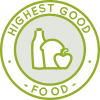 One Community is demonstrating widespread and lasting eco-lifestyle access through Highest Good food that is more diverse, more nutritious, locally grown and sustainable, and part of our open source botanical garden model to support and share bio-diversity:
One Community is demonstrating widespread and lasting eco-lifestyle access through Highest Good food that is more diverse, more nutritious, locally grown and sustainable, and part of our open source botanical garden model to support and share bio-diversity:
- Learn about the structures: Hoop House Hub | Aquapini & Walipini Open Source Hub
- See what we’ll be growing: Gardens & Hoop Houses | Large-scale Structures | Food Forest | TA
This week, the core team continued their review of the Master Tools, Equipment, and Materials/Supplies list, changing all comments of “O” to “ORCH” and “SLAM” to “SA”. It was noted that all “F” and “FD” designations should be eliminated from the website, as they represent the Food document, which is now integrated into the Master Tools, Equipment, Materials/Supplies document, with TEMS allocated to specific projects, including food. The Highest Good Food initiative is a key component of One Community’s open source plans, focused on widespread and lasting eco-lifestyle access, and exemplifies the organization’s commitment through innovative design and implementation. Below are some of the images showcasing this work.
Chelsea Mariah Stellmach (Project Manager) continued her work on the Transition Food Self-sufficiency Plan menus and customization spreadsheets. She integrated and revise the merged food procurement and storage content to incorporate details about the Mariposa case study, additional logistical information, and updates related to the transition kitchen. Chelsea then color-coded the google document to prepare it for handoff to the graphic designer. As an essential aspect of One Community’s open source goals, the Highest Good Food initiative supports widespread and lasting eco-lifestyle access as a foundation for sustainable living. Below are some of the images showcasing this work.
Dirgh Patel (Volunteer Mechanical Engineer) continued assisting with the Climate Battery design evolutions. He edited the final report by adding explanations in the Dimensions and Assembly section and updated the stress-strain simulation explanation for improved clarity. Additional assumptions were added to the thermal simulation section to improve understanding, and a “Research Needed” task was completed by providing relevant information for the remaining work. Work was started on the heat gain by solar radiation task, including inserting reference images and performing calculations to determine the total rooftop area. He worked on the heat gain section by showing how area calculations were made using SolidWorks and by outlining the key assumptions used in estimating heat gain. The assembly video was modified by removing the rotation part, and the area calculation section was updated with new images and clear explanations. One Community’s open source mission is powerfully reflected in the Highest Good Food initiative, which is focused on advancing widespread and lasting eco-lifestyle access for global benefit. The following visuals highlight key outcomes of this initiative.
Faeq Abu Alia (Architectural Engineer) continued his work on the Earthbag Village. He developed the aquapini and walipini models for the Southeast and Southwest regions in Lumion, adding vegetation clusters and pathways, updating material settings to improve render realism, refining texture mapping, and integrating ground cover and planting zones. He optimized render settings, positioned environmental elements, and adjusted landscaping details to enhance depth and spatial context. One Community’s open source launch of widespread and lasting eco-lifestyle access begins with Earthbag Village, the first of seven planned villages providing housing. See below for some of the pictures related to this work.
Jay Nair (BIM Designer) continued working on Aquapini and Walipini Planting and Harvesting lighting and HVAC design. He continued working on calculating the lighting energy requirements for each zone of Greenhouse Walipini 1. This involved analyzing zone-specific conditions, applying fixture specifications, and entering data into the standardized format. The goal was to ensure that each zone’s lighting needs were accurately represented based on environmental factors and system design. The Highest Good Food initiative plays a leading role in One Community’s open source platform, promoting widespread and lasting eco-lifestyle access through sustainable and participatory development. Below are some of the images showcasing this work.
Keerthi Reddy Gavinolla (Software Developer) continued working on the Highest Good Food page, specifically details for the Soil Amendment page. She continued working on the Soil Amendment page by editing the document based on the current website content. Keerthi reviewed both the document and the website to identify differences, struck outdated text, updated the formatting, and made necessary adjustments for clarity and consistency. She updated the Moonfall, Expressers, and Lucky Star Team Blog #641. And she tested some pull requests on the dev site. Built on One Community’s open source foundation, the Highest Good Food initiative is dedicated to widespread and lasting eco-lifestyle access, empowering communities through self-sustaining systems. Her contributions are showcased in the collage below.
Pallavi Deshmukh (Software Engineer) continued working on adding the new Zenapini 2 content to the Aquapini and Walipini Planting and Harvesting page. She completed and submitted information for six interviews, reviewed the whole Permaculture web page, and fixed the issues where needed. She uploaded the required images and specific href for that as well. She verified the proper functioning of all visual and navigation elements. She continued working on adding Zenapini #2 content from Silin to the website. Pallavi also created new content for blog 641 and collaborated closely with her teammates, reviewing their suggestions and incorporating feedback to help produce a clear, consistent, and polished final version. In alignment with One Community’s open source objectives, the Highest Good Food project integrates widespread and lasting eco-lifestyle access into a larger vision of regenerative living. Her contributions are highlighted in the collage below.
Shivangi Varma (Volunteer Architectural Designer And Planner) started contributing to the Highest Good Food and developed an understanding of its various components, including the design and masterplan as well as the overall intent and organizational structure of the initiative. She created Google Docs for the Highest Good Food Infrastructure, Aquapini and Walipini Open Source Hub, and Planting and Harvesting pages. She copy-pasted the content from the three corresponding web pages into the documents and read through them in full, identifying sections where graphic standards could be developed and added. This analysis was informed by reviewing all the DWG files available in the open source folder. Shivangi also added comments to each Google Doc with a first draft of input on what should be included in terms of graphics, text, and formatting to better support a cohesive narrative for potential funders or for replication. The Highest Good Food initiative plays a leading role in One Community’s open source platform, promoting widespread and lasting eco-lifestyle access through sustainable and participatory development. Below are some of the images showcasing this work.
Tyson Denherder (Volunteer Pioneer Team Member) started contributing to the Highest Good Food and completed the onboarding process, reviewed the Highest Good Food pages on food procurement and storage, sustainability, and the transition kitchen, and went through Chelsea’s work on the Recipe Build-Out Tutorial. He used the tutorial to create a 3-day recipe plan, corrected several errors, and offered suggestions to improve the Recipe Build-Out Tool. The Highest Good Food initiative plays a leading role in One Community’s open source platform, promoting widespread and lasting eco-lifestyle access through sustainable and participatory development. Below are some of the images showcasing this work.
HIGHEST GOOD ENERGY PROGRESS
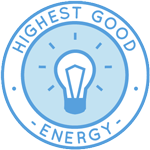 One Community is demonstrating widespread and lasting eco-lifestyle access through Highest Good energy that is more sustainable, resilient, supports self-sufficiency and includes solar, wind, hydro and more:
One Community is demonstrating widespread and lasting eco-lifestyle access through Highest Good energy that is more sustainable, resilient, supports self-sufficiency and includes solar, wind, hydro and more:
- Learn about the open source sustainable-energy foundations: Solar, Hydro, and Wind
- Explore our research into the most sustainable products and companies for saving water and energy: Insulation, Eco-laundry, Lightbulbs and Light Bulb Companies, Doors and Door Companies, Windows and Window Companies, Toilets, Faucets and Faucet Accessories, Urinals, and more.
This week, Dishita Jain (Data Analyst) continued supporting with the Highest Good Energy research and cost analysis for helping people create their own sustainable futures. Her tasks focused on the Energy Infrastructure Cost Analysis and Visualizations task under the HG Energy project. She spent time updating the WordPress page by adding accurate spacing, finalizing content, checking image captions, and ensuring all links were correctly placed. She compiled data from multiple tabs into a single master worksheet and sent the updated version to Jae for review and feedback. Additionally, she made edits based on feedback received, including updating the main sheet with new links and making refinements to the WordPress content. On a separate task under OC Administration, she reviewed the Blues Steel and Binary Brigade teams, created collages, and added team summaries. One Community’s open source mission is powerfully reflected in the Highest Good Energy initiative, which advances widespread and lasting eco-lifestyle access as a model for global benefit. Below are some of the images showcasing this work.
Shravan Murlidharan (Volunteer Electrical Engineer) continued contributing to the Highest Good Energy component by assisting with off-grid and grid-tied solar microgrid. He worked on the report titled “Grid-Tied vs Off-Grid Solar: Overview” by adding content focused on system components and upfront costs. He created a graph and began developing a spreadsheet to organize cost data for comparison. The report was expanded to include a 10-year economic analysis of grid-tied, off-grid, and hybrid solar configurations, addressing their financial viability in both residential and commercial settings. This analysis included a review of system costs, electricity rates, solar yields, and incentive structures, along with calculations of payback period, net present value, and internal rate of return across different U.S. states. Additional focus was placed on how hybrid systems perform in regions with time-of-use pricing or restricted net metering policies. This work supports One Community’s mission to provide widespread and lasting eco-lifestyle access. Shravan also analyzed hybrid grid systems, considering their benefits, cost implications, and integration strategies, and created a concept diagram illustrating a hybrid solar and storage setup. To enhance clarity for both technical and non-technical readers, he began developing a flowchart that shows the operation of a fully off-grid solar system. He explored the use of solar panels in other industries, including electric vehicles and building-integrated solar, and created a Google Sheets file to organize the comparative cost data. In addition, he started working on case studies related to solar energy storage and developed diagrams illustrating off-grid systems in real-world contexts. He gathered research to support these case studies by identifying relevant applications of solar storage in various locations and sectors. Guided by its open source philosophy, One Community developed the Highest Good Energy initiative to pioneer sustainable solutions by widespread and lasting eco-lifestyle access. His contributions are shown in the collage below.
HIGHEST GOOD EDUCATION PROGRESS
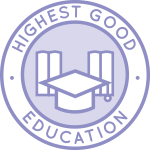 One Community is demonstrating widespread and lasting eco-lifestyle access through Highest Good education that is for all ages, applicable in any environment, adaptable to individual needs, far exceeds traditional education standards, and more fun for both the teachers and the students. This component of One Community is about 95% complete with only the Open Source School Licensing and Ultimate Classroom construction and assembly details remaining to be finished. With over 8 years of work invested in the process, the sections below are all complete until we move onto the property and continue the development and open sourcing process with teachers and students – a development process that is built directly into the structure of the education program and everything else we’re creating too:
One Community is demonstrating widespread and lasting eco-lifestyle access through Highest Good education that is for all ages, applicable in any environment, adaptable to individual needs, far exceeds traditional education standards, and more fun for both the teachers and the students. This component of One Community is about 95% complete with only the Open Source School Licensing and Ultimate Classroom construction and assembly details remaining to be finished. With over 8 years of work invested in the process, the sections below are all complete until we move onto the property and continue the development and open sourcing process with teachers and students – a development process that is built directly into the structure of the education program and everything else we’re creating too:
- Program Overview: Education Open Source Hub
- How the components work together in designing human orchestrated eco-abundance: How to use the Education for Life Program
- Lesson Plans for Life – Lesson Plans How-to
- Foundations of Outstanding Leaders, Teachers, and Communicators
- Curriculum for Life
- Teaching Strategies for Life
- Learning Tools and Toys for Life
- Evaluation and Evolution
This week, Harshitha Rayapati (Program Manager) continued work on detailing deliverables for the Highest Good Education software platform, outlining various components, developing Figma designs, and expanding the visual layout of the student dashboard. She collaborated with Anuneet to clarify and refine the shared navigation bar, leaving design direction through comments on her Figma file. She updated the teacher dashboard to support the assignment redo workflow, enabling teachers to flag submissions for resubmission. Harshitha expanded the component documentation for the evaluation results page, detailing features and integration with the teacher dashboard. She also worked on improving the overall screen-to-screen flow of the dashboard by enhancing explanatory elements and adjusting the layout in Figma, including usability improvements to the left navigation bar. Additionally, she provided feedback on Ravi’s work related to the student dashboard activity breakdown screen, compiled the weekly blog update, reviewed the Housing Team’s progress, edited the blog page, and created a collage. The One Community model of widespread and lasting eco-lifestyle access, exemplified by sustainably built classrooms like this, represents sustainable change for the whole planet. See the collage below for her work.
HIGHEST GOOD SOCIETY PROGRESS
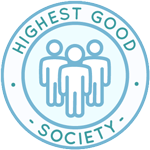 One Community is demonstrating widespread and lasting eco-lifestyle access through a Highest Good society approach to living that is founded on fulfilled living, the study of meeting human needs, Community, and making a difference in the world:
One Community is demonstrating widespread and lasting eco-lifestyle access through a Highest Good society approach to living that is founded on fulfilled living, the study of meeting human needs, Community, and making a difference in the world:
- Read the Highest Good society overview: Highest Good Society
- Learn about the model for fulfilled living and sharing: A Day in the Life
- Learn about the 4 economic models: RBE | For-profit | Non-profit | Entrepreneurship
- Learn about our open source community collaboration and management software: The Highest Good Network
This week, the core team completed over 48 hours managing One Community’s volunteer-work review (not included in the summaries here), emails, social media accounts, web development, new bug identification, and bug-fix integration for the Highest Good Network software, as well as interviewing and onboarding new volunteer team members. They shot and incorporated the video above which explains how widespread and lasting eco-lifestyle access is a foundation of the bigger picture of everything One Community is doing. The image below shows some of this work.
Govind Sajithkumar (Project Manager) continued focusing on analytics and content management for Facebook and Instagram on Meta platforms. He managed the weekly social media content by scheduling and uploading a new rotation of posts to both platforms. He updated the Open Source spreadsheet with content details, including descriptions and publishing timestamps, to maintain accurate tracking records. Govind also updated the social media analytics spreadsheet with the latest audience metrics, demographics, and engagement statistics. Additionally, he supported PR Review Team management by providing feedback on team members’ documents, modifying the WordPress site with the team’s weekly summary and collage, and updating the PR Review Team Table and HGN PR spreadsheet. He also reviewed fellow admins and submitted his admin feedback table. This effort supports One Community’s broader mission of widespread and lasting eco-lifestyle access. The images below showcase some of this work.
Jaiwanth Reddy Adavalli (Project Manager) continued developing the Job Applicants page along with components of the Highest Good Network Phase 2 and Phase 4 dashboards, including the PR Team analytics section. He tested several pull requests in the Highest Good Network software and continued work on the development of the PR Review Team Analytics software and dashboard. He monitored software team management documents to manage task creation and followed up on the progress of those tasks. Jaiwanth also updated the action items for the corresponding Figma wireframes. As part of the PR review team, he reviewed the pull requests of the volunteer team assigned to him. This project plays an important role in One Community’s commitment to widespread and lasting eco-lifestyle access. The following images show his work for the week.
ADMINISTRATION TEAM
The Administration Team summary, covering their work administrating and managing most of One Community’s ongoing process for widespread and lasting eco-lifestyle access, was managed by Bhakti Tigdi (Project Manager) and includes Anuneet Kaur (Administrator), Harsha Ramanathan (Administrator), Himanshu Mandloi (Engineering Project Manager), Neeharika Kamireddy (Data Analyst), Olawunmi “Ola” Ijisesan (Administrative and Management Support), Olimpia Borgohain (Data Analyst and Team Administrator), Rachna Malav (Data Analyst) and Rishi Sundara (Quality Control Engineer and Team Administrator). The Highest Good Network software is how we’ll be managing and objectively measuring our process for widespread and lasting eco-lifestyle access through our social architecture, construction, production, and maintenance processes.
This week, the Administration team contributed to a wide range of project, content, and process management tasks across development, outreach, and team coordination areas. Anuneet researched sustainable hand dryer options, compiled supporting data for graphic content, managed volunteer bios, and began drafting content for the Licensing and Accreditation page under the Highest Good Education Program. She also updated web elements and image files, supported blog coordination, and contributed to admin responsibilities across multiple teams. This effort aligns with One Community’s goal of creating widespread and lasting eco-lifestyle access. Harsha conducted research on sustainable recycling options, optimized images for SEO, and completed webpage updates and revisions based on feedback. As part of his role training, he followed structured onboarding tasks and addressed flagged items from the admin team. Himanshu handled the daily timelog review process, followed up with members on incomplete entries and pending tasks, adjusted logged hours, and coordinated blog content and image uploads. This work supports One Community’s mission to provide widespread and lasting eco-lifestyle access.
Khushie finalized the social media calendar for the metric system campaign, collaborated with the graphics team through creative briefs, and managed platform scheduling and tracking. She also reviewed new content uploads and edited blog drafts while supporting PR and admin quality checks. Neeharika reviewed project dashboards to monitor task status, tested development pull requests, assigned action items, and completed her admin and interview responsibilities. Ola completed pull request reviews, updated weekly folders and summaries, responded to team comments, and maintained workspace organization. Olimpia reviewed the work of two new contributors, continued building the social media post tracking system in Google Sheets, and completed blog and admin tasks. Rachna worked on SEO content updates and team communication follow-ups but was unable to schedule interviews due to conflicts. Rishi created team collages, merged all individual blogs into the weekly main blog post, performed SEO optimization, and tested multiple PRs, including reviews and follow-ups on pending development tasks. This work contributes to One Community’s commitment to widespread and lasting eco-lifestyle access. See below to view images of their work.
GRAPHIC DESIGN TEAM
The Graphic Design Team’s summary includes Aurora Juang (Graphic Designer), Junyuan Liu (Graphic Designer, UI/UX Designer), Yulin Li (Graphic Designer), Qinyi Liu (Graphic Designer), and Rutal Deshmukh (Graphic Designer), covering their work on graphic designs for widespread and lasting eco-lifestyle access.
This week, Aurora created 12 social media posts aligned with the brand’s visual direction, supporting team coordination and contributing to widespread and lasting eco-lifestyle access. Qinyi corrected AI-generated character designs and added background images while refining new visuals using MidJourney, ChatGPT, and Photoshop. Rutal updated social media graphics and created new ones, supporting widespread and lasting eco-lifestyle access, and contacted Jae after facing login issues while trying to access announcement bios. Yulin revised the “Most Sustainable” infographic to improve clarity and technical accuracy, restructuring text to highlight features like water-saving smart toilets. She also created consistent bio images for a software engineer profile. See the Highest Good Society pages for more on how this contributes to widespread and lasting eco-lifestyle access. See the collage below to view some of their work.
HIGHEST GOOD NETWORK PROGRESS
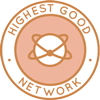 One Community is demonstrating widespread and lasting eco-lifestyle access through open source Highest Good Network® software that is a web-based application for collaboration, time tracking, and objective data collection. The purpose of the Highest Good Network is to provide software for internal operations and external cooperation. It is being designed for global use in support of the different countries and communities replicating the One Community sustainable village models and related components.
One Community is demonstrating widespread and lasting eco-lifestyle access through open source Highest Good Network® software that is a web-based application for collaboration, time tracking, and objective data collection. The purpose of the Highest Good Network is to provide software for internal operations and external cooperation. It is being designed for global use in support of the different countries and communities replicating the One Community sustainable village models and related components.
- Learn about our open source community collaboration and management software: The Highest Good Network
This week, the core team continued their work on the Highest Good Network pull requests and confirmed the following fixes: creation of the frontend for the resource usage overview (#3399), Global Volunteer Network Map in the Total Org Summary (#3332), random timer icon issue (#3327), nullnull bug in the “Other Links” dropdown (#3442), spacing and dark mode issue in the role distribution chart (#3438), bug preventing users from enabling dark mode (#3412), and the Leaderboard refresh issue related to time off (#3041). This action reflects One Community’s dedication to widespread and lasting eco-lifestyle access.
The following PRs were not fixed: Archive button dark mode issue (#2981), new users not appearing in User Management on refresh (#2895), grouped bar chart for Quantity of Materials Used in Projects (#3313) and its related fix (#3428) due to lack of data on the main branch, and the blue square chart issue (#3435). Additional work included assigning tasks to three volunteers, testing the fix for the incomplete Members list when the ALL-TIME button is selected (Nikita PR1144 and PR2854, not yet merged on the main branch), and attempting to test the Job CC feature (PRs #2924 and #1165), which could not be verified due to missing data on the main branch. Two new bugs were reported: one involving the layout of the red circular icon containing a number, and another concerning the missing visual representation of assigned vs. completed tasks in the “Task Completed” section of the Total Organization Summary dashboard. They were also unable to test PRs #1222 (fix lead team badge auto-assignment) and #3169 (Create User form Toasts) due to a bug that prevents creating a new member and a new team. These efforts represent incremental progress in helping people create their own sustainable futures. See the Highest Good Society and Highest Good Network pages for more on how this aligns with One Community’s commitment to widespread and lasting eco-lifestyle access. The collage below shows some of this work.
ALPHA SOFTWARE DEVELOPMENT TEAM
The Alpha Software Team, covering their progress on the Highest Good Network software, was managed by Lin Khant Htel (Frontend Software Developer) and includes Nikita Kolla (Full Stack Developer). This software is an internal management and communication platform with the goal of widespread and lasting eco-lifestyle access.
This week, Lin approved PR #1461 after confirming all test cases passed during local testing, reviewed the Alpha team’s weekly submissions, and completed team management tasks supporting widespread and lasting eco-lifestyle access. Nikita tested additional core team processing hours by creating a backend API, adjusting cron jobs, and writing test cases. See the Highest Good Society and Highest Good Network pages to learn more about how this work contributes to widespread and lasting eco-lifestyle access. View some of the team’s work in the collage below.
BLUE STEEL SOFTWARE DEVELOPMENT TEAM.
The Blue Steel Team’s summary, presenting their work on the Highest Good Network software, was managed by Sheetal Mangate (Software Engineer) and includes Humemah Khalid (Software Engineer/Backend Developer), Linh Huynh (Software Engineer), and Ramakrishna Aruva (Software Engineer). The Highest Good Network software is how we’ll be managing and objectively measuring our process for widespread and lasting eco-lifestyle access.
This week, Linh worked on unit testing for the `inventoryController.js` and `emailController.js` files. The test for `emailController.js` was completed and submitted for review. While testing `inventoryController.js`, she encountered issues related to asynchronous handling and the mocking of Mongoose methods using callbacks, which caused Jest to hang. To resolve this, she replaced `mockResolvedValue` and `mockRejectedValue` with `mockImplementation` to match the callback-style used in the controller logic. She added console logs to trace open handles and isolated test blocks to identify the specific issue preventing test completion. Additional time was spent debugging application crashes during test execution, reviewing controller code, and validating test coverage through repeated testing. This progress reflects One Community’s focus on widespread and lasting eco-lifestyle access. Humemah worked on a task related to managing user permissions for password updates, specifically enabling a user with the “Update Password (Others)” permission to reset or change the password of other users. This task is related to previously submitted pull requests #2860 and #1146. Sheetal focused on front-end development for the Reddit Auto Poster project. She added code to the `announcement.js` file to display the Reddit Auto Poster button, worked on UI design, and started breaking the UI into reusable components. This initiative is part of One Community’s vision for widespread and lasting eco-lifestyle access. She also investigated a backend issue and encountered a merge conflict that prevented her from pulling the latest code from the development branch. Ramakrishna worked on an issue where a blank screen appears when an admin or owner attempts to add lost hours to a person or project. He investigated potential sources of the error, analyzed where the issue might be occurring, and checked out the latest branch to start implementing a fix. He focused on identifying the root cause, examined the reports component in detail, started implementing exception handling, and reviewed related API calls to understand the existing functionality. See the Highest Good Society and Highest Good Network pages to learn more about how their work contributes to widespread and lasting eco-lifestyle access. See below to view images of their work.
BINARY BRIGADE SOFTWARE DEVELOPMENT TEAM
The Binary Brigade Team’s summary, overseeing advancements in the Highest Good Network, was managed by Aureliano Hubert Maximus (Volunteer Software Engineer) and includes Amalesh Arivanan (Software Engineer), Geeta Matkar (Software Engineer), Jaissica Hora (Software Engineer), Nikhil Routh (Software Engineer), Ramsundar Konety Govindarajan (Software Engineer), and Samman Baidya (Software Engineer). The Highest Good Network software is how we’ll be managing and objectively measuring our progress in widespread and lasting eco-lifestyle access through our social architecture, construction, production, and maintenance processes.
This week, Amalesh focused on enhancing the responsiveness of the Projects/People/Teams page for narrow screens by enabling automatic scrolling when users type into the search box and ensuring that search results are clearly visible without manual intervention. He ensured these changes did not affect the design or behavior on larger screens. His updates were tested thoroughly and documented with screenshots and videos, which were uploaded to the shared Dropbox using proper naming conventions. He also tracked his time using the HGN timer and completed onboarding tasks to maintain access to project tools. This development contributes to One Community’s aim of widespread and lasting eco-lifestyle access. Aureliano continued working on the HGN Software Development project, particularly on an auto-poster for Facebook and Facebook Groups. He implemented and tested backend login endpoints for Facebook, identified issues with popup behavior requiring changes on both frontend and backend, and began integrating frontend components for the feature, though he faced challenges with component loading. Ram worked on a hotfix assigned by Jae related to the Timelog component, where the text “Viewing time Entries from date to date” was displaying with center alignment instead of the expected left alignment. Initially, he considered it might be a backend issue related to how weekly logged data was fetched, combined with a possible styling error. After clarification from Jae that the backend was not the cause and that the feature was functioning correctly two weeks prior, he then focused on identifying the pull request that introduced the alignment change. This achievement supports One Community’s broader plan for widespread and lasting eco-lifestyle access.
Geeta submitted PR 3712 to correct a people report calculation error and resolved test failures in PR 3376 by updating unit test files. She also began fixing layout issues in the people report view for half-screen widths. Jaissica concentrated on resolving state management issues in the summary dashboard by refining Redux data flow, adjusting reducer logic, and verifying proper component rendering. She also conducted a comprehensive review of frontend and backend components within the HGN Dashboard, identifying problems such as inconsistent API handling, rendering failures, and lack of input validation, and shared these insights with the team. This task contributes to the realization of widespread and lasting eco-lifestyle access at One Community. Nikhil worked on updating import paths and class references in JSX files. He also resolved multiple merge conflicts across PRs 3620 and 3622 and successfully merged updates into the development branch. Samman advanced the voting and polling feature by developing necessary backend endpoints, adding notification logic, creating buttons for user interaction, and fixing a blocker caused by a prior pull request. He also resolved over five merge conflicts in outstanding pull requests, contributing to smoother progress on pending features. See the Highest Good Society and Highest Good Network pages to learn more about how this work relates to widespread and lasting eco-lifestyle access. View some of the team’s work in the collage below.
CODE CRAFTERS SOFTWARE DEVELOPMENT TEAM
The Code Crafters Team, covering their work on the Highest Good Network software, was managed by Sai Moola (Software Engineer) and includes Ashrita Cherlapally (Software Engineer), Dhrumil Dhimantkumar Shah (Software Engineer), Greeshma Palanki (Software Engineer), Pratyush Prasanna Sahu (Software Engineer), Ravikumar Sripathi (Software Engineer), and Sundar Machani (Software Engineer). The Highest Good Network software is how we’ll manage and objectively measure our process for establishing abundant community systems through our social architecture, construction, production, and maintenance processes, and support widespread and lasting eco-lifestyle access.
This week, Ashrita developed the job analytics feature by setting up the backend aggregation pipeline and database schema for role comparisons, enhanced the frontend interface by addressing chart display issues and adjusting Y-axis labels, tested the feature across filter combinations, date ranges and screen sizes to meet requirements, created frontend PR #3724, and is working on fixing errors identified during review. This activity strengthens One Community’s commitment to widespread and lasting eco-lifestyle access. Dhrumil wrote unit test cases for the AddConsumable.jsx component, investigated and resolved an unknown issue encountered during pull request creation, created PR #3612, and resolved merge conflicts to enable the pull request to merge. Greeshma worked on PR2196 to resolve console errors that were causing the Dashboard to render as a blank page. She implemented the requested changes, fixed merge conflicts, and added backend logic in MongoDB to support the required functionality. While testing, an issue was identified where HandleDashboardAccess was blocking access to the webpage due to a permission mismatch. This was addressed by updating MongoDB Cloud permissions to allow manager teams to access team member details. The developer also performed code cleanup to improve maintainability and pushed the updated code to Git. This task aligns with One Community’s objectives for widespread and lasting eco-lifestyle access.
Pratyush built the backend for the Tools Most Susceptible task by creating the projectMaterial model file, implementing createProjectMaterial, getProjectMaterial, getProjectMaterialByDate, and getProjectMaterialByProject functions in the controller, setting up corresponding routes, and integrating them into startup/routes.js. Ravi worked on designing the “Past Lesson Plans” page using Figma. The wireframe includes a top search and filter bar with dropdowns for “Subject” and “Label,” enabling quick access to relevant content. Tabbed navigation allows toggling between “All Lesson Plans” and “Favorites.” The main grid layout displays tiles showing each lesson’s title, completion date, and icon buttons for submitted work, comments, reflections, and evaluation results. Each tile also includes label and favorite options. Clicking a tile routes to a read-only detail view where interactive elements are disabled, clearly indicating it’s a past, completed lesson. The interface updates are intended to improve usability while supporting the broader goal of widespread and lasting eco-lifestyle access through transparent and intuitive educational design. Sai tested backend APIs for generating risk profiles for mock projects and linked the backend with the frontend so that chart data is rendered from the API in a bar graph, created PR #1507 for the backend portion of the Phase 2 Summary Dashboard task, and prepared the chart for responsiveness pending a frontend pull request. This effort reinforces One Community’s direction toward widespread and lasting eco-lifestyle access. Sundar updated testing PR #3602 with instructions and created an Excel sheet documenting endpoints for the review process, added a procedure for testing the Node.js upgrade to PR #3602, cleared merge conflicts for the 2.41 release from development to main in PRs #1511, #1514 and #1515, wrote code for the email sender retry mechanism and documented it in PR #1508, completed retry functionality development in PR #1506, resolved conflicts and verified functionality in PRs #3105, #3609, #3675, and #3433, fixed the LogTimeEntry bug related to external API response times in PR #3710, and tested the log time button behavior during description entry. All efforts this week contributed to improving system reliability and user experience in support of widespread and lasting eco-lifestyle access, ensuring tools and interfaces align with the initiative’s long-term goals. See the Highest Good Society and Highest Good Network pages for more on how this relates to widespread and lasting eco-lifestyle access. View some of the team’s work in the collage below.
DEV DYNASTY SOFTWARE DEVELOPMENT TEAM
The Dev Dynasty Team’s summary, covering their work on the Highest Good Network software, was managed by Zhifan Jia (Software Engineer) and includes Dharmik Patel (Software Engineer), Manvitha Yeeli (Software Engineer), Mohan Satya Ram Sara (Software Engineer), Shraddha Shahari (Software Engineer), and Vamsi Krishna Rolla (Software Engineer). The Highest Good Network software is how we’ll manage and objectively measure our process for establishing abundant community systems through our social architecture, construction, production, and maintenance processes to support widespread and lasting eco-lifestyle access.
This week, Dharmik finalized and tested the team code filter set feature related to PR1274, including support for saving filter names up to seven characters long. He began backend development to persist filter data, made multiple updates to address previously reported issues, tested the backend logic to confirm proper database interaction, and prepared supporting materials and summaries to conclude the work for the pull request. This work supports One Community’s mission to provide widespread and lasting eco-lifestyle access. Manvitha collected and structured pull request review data from the HighestGoodNetworkApp and HGNRest repositories by fetching all pull requests and their associated review information and organizing reviews per pull request. While setting up the route to serve the GitHub review data, she encountered an unauthorized request error, which she is addressing. She also implemented formatting fixes in PR3670 by dynamically aligning the height of the user details panel on the People Report page based on visible sections such as projects and tasks, adjusted CSS units to improve layout responsiveness, fixed the display of “Hours logged this week” for inactive users, modified the toggle component to allow display of percentages or total hours with “Hrs” appended, and resolved merge conflicts in the pull request. This effort aligns with One Community’s goal of creating widespread and lasting eco-lifestyle access.
Mohan completed the final implementation and pull request for the popup “i” icon on the Weekly Summaries Reports page, ensuring the design matched the Profile → Basic Information section and state changes were saved correctly by Owners. He documented tooltip behavior and permissions in the wiki and completed testing to validate expected performance. Additionally, he fixed login issues on the /hgnform route by identifying the absence of a RequireAuth wrapper and adding logic to redirect unauthenticated users. This contribution advances One Community’s pursuit of widespread and lasting eco-lifestyle access. Mohan simulated expired sessions, tested token expiration handling, updated route configurations, and used useEffect to manage inconsistent authentication states, all contributing to greater system stability. These efforts help strengthen widespread and lasting eco-lifestyle access by reinforcing secure and user-friendly software systems. Shraddha worked on resolving a broken page issue in the send email functionality in the development environment, which was initially identified through Slack. This progress reflects One Community’s focus on widespread and lasting eco-lifestyle access. She analyzed the affected components, identified class name conflicts causing layout inconsistencies, and applied namespace-based naming to prevent unintended style inheritance. After verifying the UI behavior for consistent layout rendering, she identified a backend response inconsistency affecting conditional rendering and began addressing it. She completed the fix, pushed the code, and created a pull request for review. Shraddha also continued work on the equipment list update button, analyzing code to determine which columns should be displayed and performing additional testing and fixes. This development contributes to One Community’s aim of widespread and lasting eco-lifestyle access.
Vamsi worked on enabling interactivity and responsiveness in the stacked bar graph component by implementing Duration, Team, and Sort filters with default values and styled dropdowns. He connected the Team filter to a simulated dynamic data source, added data-fetching logic to update the chart based on filter changes, and implemented re-rendering, loading indicators, and error states to improve user feedback. Vamsi also ensured the chart layout adapted to screen sizes and resolutions. This achievement supports One Community’s broader plan for widespread and lasting eco-lifestyle access. Zhifan implemented enhanced edit logs for Tasks by creating a new task change log component and integrating it into the TeamMemberTask component. He added a new backend model and middleware to support individual task change tracking and updated the frontend to fetch log data from the new API. Improvements included pagination, error handling, mock data support, and refined user attribution. He resolved errors during testing and began investigating logging inconsistencies. All work across the team this week contributed to improving system resilience and clarity, reinforcing the foundation for widespread and lasting eco-lifestyle access through transparent task tracking, secure data handling, and responsive design. These software improvements directly support the goals of widespread and lasting eco-lifestyle access as envisioned in the Highest Good Network. See the Highest Good Society and Highest Good Network pages for more on how this relates to widespread and lasting eco-lifestyle access. View some of the team’s work in the collage below.
EXPRESSERS SOFTWARE DEVELOPMENT TEAM
The Expressers Team’s summary, which covers their work on the Highest Good Network, was managed by Casstiel Pi (Software Engineer) and includes Meenashi Jeyanthinatha (Full Stack Developer), Rahul Trivedi (Software Engineer) and Reina Takahara (Software Developer). The Highest Good Network software helps us manage and objectively measure our progress toward widespread and lasting eco-lifestyle access through innovative software development, testing, and collaboration. This week, Casstiel continued researching and attempting to implement the claimed auto-poster feature for MySpace by reviewing and studying the existing codebase. The research revealed that MySpace no longer offers a public API, making the feature unviable. A different feature or bug was selected to work on instead. In the absence of the direct reporting manager, Strallia Chao, Casstiel assumed managerial responsibilities for conducting the end-of-week reporting and review, followed the provided instructions, reviewed each team member’s work, and gave feedback accordingly. This accomplishment helps advance One Community’s path to widespread and lasting eco-lifestyle access. Meenashi updated pull request 1462 with test instructions and supporting videos to assist with testing. The Edit section for work experience and additional information is disabled by default and becomes editable after the user clicks the edit button, which then toggles its label from Edit to Save. However, the updated details are not currently saved to MongoDB. An API endpoint was created to update the followUp field of userSkillsProfileData, with validations added to require the field and enforce a minimum of 20 words. This functionality was also tested through the frontend and is working as expected. This task aligns with One Community’s objectives for widespread and lasting eco-lifestyle access.
Rahul focused on enhancing the UI and functionality of the graph for the PR Review Team Analytics Dashboard. He designed the layout, applied CSS styling, and developed a graph to display the top 20 most popular pull requests with proper labeling, and responsiveness. He added a background to the graph and implemented a dropdown component to enable selection of different time periods. This effort reinforces One Community’s direction toward widespread and lasting eco-lifestyle access. Mock data was included to support testing and visual representation. Reina linked survey form data to the frontend of the hgn/profile/skills page using the HGN/FORM/SUBMIT endpoint to retrieve each user’s job form responses. She mapped the values into the existing template and applied color-coded labels based on the ranking logic to ensure the data displays correctly in the designated sections of the interface. See the Highest Good Society and Highest Good Network pages for more on how this contributed to widespread and lasting eco-lifestyle access. See the collage below to view the team’s work.
LUCKY STAR SOFTWARE DEVELOPMENT TEAM
The Lucky Star Team’s summary, which covers their work on the Highest Good Network, was managed by Barnaboss Puli (Volunteer Software Engineer) and includes contributions from Dipti Yadav (Software Engineer), Durga Venkata Praveen Boppana (Software Engineer), Ganesh Karnati (Software Engineer), Kedarnath Ravi Shankar Gubbi (Software Engineer) and Venkataramanan Venkateswaran (Software Engineer). Their work continued to support our goal of widespread and lasting eco-lifestyle access through collaborative and cross-functional software development. This week, Barnaboss contributed to the Elite Bug-fix Team by addressing a hotfix related to the bio posted toggle in weekly summaries that was not communicating with the backend, investigated a similar issue in the user reports section, worked on a separate hotfix allowing editing of logged time after a week is closed, continued work on the Twitter auto-poster feature, and progressed the volunteer hours donut chart on the Total Org Summary by fixing backend issues and resolving merge conflicts. This work plays a role in One Community’s delivery of widespread and lasting eco-lifestyle access. Dipti worked on a pull request that lacked a description and testing guidance. She identified that it involved test coverage for the postTimeEntry function in the timeEntryController, resolved failing tests by creating a new test file, and updated the pull request description with detailed instructions and a screenshot to pass all checks. This project supports One Community’s efforts to expand widespread and lasting eco-lifestyle access.
Durga identified the pull request responsible for changes to the Weekly Summary Report page, specifically those affecting the Bio Status toggle switch, and shared the findings with Jae. He also confirmed a horizontal scrollbar issue appearing in the HGN application, adjusted Weekly Summary content alignment, uploaded supporting screenshots, and updated the summary upload logic to improve date grouping, pending further verification. This work supports One Community’s mission to provide widespread and lasting eco-lifestyle access. Ganesh developed the frontend of the Weekly PR Grading screen for the PR Review Team Analytics Dashboard. He implemented a React.js table to display reviewer data with editable fields, dropdowns for assigning grades, real-time state updates, input validation, a save function to submit data, and user feedback indicators, while also refining layout responsiveness and clarity. This effort aligns with One Community’s goal of creating widespread and lasting eco-lifestyle access. Kedarnath fixed a bug in the HighestGoodNetworkApp that caused unintended team code auto-selection during copy-paste operations. He submitted a merge request with clean code to preserve selection state and prevent refreshes, tested the solution locally, and confirmed stable behavior. Venkataramanan joined the development team and submitted multiple pull requests to resolve visual and logic-related issues, including removing borders, fixing misaligned icons, correcting task number logic, and cleaning up unnecessary scrollbars. He also reviewed several backend and full-stack pull requests to ensure clean integration and focused on improving system usability and code stability. See the Highest Good Society and Highest Good Network pages for more on how this relates to widespread and lasting eco-lifestyle access. See the collage below to view the team’s work.
MOONFALL SOFTWARE DEVELOPMENT TEAM
The Moonfall Team’s summary, which covers their work on the Highest Good Network, was managed by Shashank Kumar (Software Engineer) and includes Alisha Walunj (Software Engineer), Bhavpreet Singh (Software Engineer) and Neel Singh (Software Engineer). The Highest Good Network software is how we’ll manage and objectively measure our progress toward widespread and lasting eco-lifestyle access through innovative software development, testing, and collaboration. This week, Alisha completed the PR Review Team Analytics Dashboard task by creating a display box for confirming promotions and submitted pull request 3727. The display box acts as a final confirmation step, triggered after clicking a Promote button on a mock page, which reveals the list of reviewers to be promoted. Alisha also started work on the Job Posting Page Analytics feature, which includes creating a pie chart to display a breakdown of applicants by reason for volunteering. She began backend setup by creating models, controllers, and routes. Bhavpreet worked on several tasks including updates to the job application analytics page by adding graphs, enabling dark mode, and adjusting CSS. On the insights page, he implemented dark mode, updated graph logic, and added support for showing multiple teams in bar graphs. He also helped resolve an import error related to email sender functionality. This progress reflects One Community’s focus on widespread and lasting eco-lifestyle access.
Neel reviewed multiple pull requests and provided detailed feedback and verification. He suggested improvements like keyword search and pagination in PR 3544, clearer column labels in PR 1404, dynamic X-axis and department filters in PR 3574, and confirmed frontend behavior in PR 1425. He addressed visibility and layout in PRs 3603 through 3622, verified visual consistency and legend display in PR 3646, and ensured proper element placement in PRs 3651 and 3653. He approved an update to increase table row limits in PR 3672. This task contributes to the realization of widespread and lasting eco-lifestyle access at One Community. Shashank focused on onboarding into his role as manager by reviewing documentation related to team structure and responsibilities. He assisted in resolving backend issues by analyzing API behavior and reviewing service configurations. He completed backend development for the review component by creating APIs, data models, and ensuring architectural compatibility. He also worked on the pay deposit component by refining data handling logic, addressing edge cases, and preparing it for integration. See the Highest Good Society and Highest Good Network pages for more details on how this work supports widespread and lasting eco-lifestyle access. See the collage below to view the team’s work.
REACTRONAUTS SOFTWARE DEVELOPMENT TEAM
The Reactonauts Team’s summary, covering their work on the Highest Good Network, was managed by Olimpia Borgohain (Data Analyst and Team Admin) and Akshay Jayaram (Software Engineer). The team includes Fatima Villena (Software Engineer), Ghazi Rahman Shaik (Software Engineer Intern), Guirong Wu (Software Engineer), Kristin Dingchuan Hu (Software Engineer), Peterson Rodrigues dos Santos (Full Stack Developer), and Siva Putti (Software Engineer). The Highest Good Network software helps manage and objectively measure progress by supporting widespread and lasting eco-lifestyle access, social architecture, construction, production, and maintenance processes to build sustainable and thriving ecosystems. This solution is portable, scalable, and ideal for off-grid or sustainable living communities.
This week Akshay completed the timelog shortcut to UserManagement by adding the new route, integrated the icon in the sidebar, and wired the click handler to open the UserManagement view with the relevant user context. He worked on widespread and lasting eco-lifestyle access and updated the wrapper layout with Flexbox, centered the ToggleSwitch component and refined media queries for small, medium, and large breakpoints. Fatima built the Promotion Eligibility table on the PR Dashboard, established routes, implemented React data-fetch logic, and styled the layout to match existing patterns. Ghazi improved task assignment by refactoring the TagsSearch and AddTaskModal components to use the preloaded allMembers dataset, added logic to show member suggestions and prevent duplicates, reconciled data field inconsistencies, and cleared a failing test that blocked branch merges.
Guirong worked with Rahul to deploy automation functionality, updated the email template to accept user-supplied image URLs through input fields, and adjusted styles for the timer pop-out feature after confirming requirements with Jae. Kristin advanced PR1955 by confirming that the current week’s time log shows by default for users without teams or tasks, noted a profile-page issue where tasks do not display, and began a Promotion Eligibility feature by creating frontend files, added a database field to track questionnaire completion, and tested with dummy data. Peterson fixed the Teams page bug that stopped newly created teams from appearing, restored the list so new entries now populate at the top of the table. Siva worked on recreating the missing refresh notification popup for the application to notify users when changes have been merged from the Dev branch to Main. See below for images showcasing the team’s work supporting widespread and lasting eco-lifestyle access.
SKYE SOFTWARE DEVELOPMENT TEAM
Skye Team’s summary, covering their work on the Highest Good Network, was managed by Olimpia Borgohain (Data Analyst and Team Admin) and Anthony Weathers (Software Engineer). The Highest Good Network software helps manage and objectively measure progress by supporting widespread and lasting eco-lifestyle access, social architecture, construction, production, and maintenance processes to build sustainable and thriving ecosystems. This solution is portable, scalable, and ideal for off-grid or sustainable living communities.
This week, Anthony completed and submitted a PR pair to finalize the “Fix badges earned icon on Profile page” task followed by a final feedback provided from Jae. He then worked on testing and updating PRs submitted by a colleague. He resolved merge conflicts and reviewed the modified files to clean up redundant or outdated code and evaluated overlapping logic. See below for a collage showcasing the team’s work supporting widespread and lasting eco-lifestyle access.
SOFTWARE PR REVIEW TEAM A-F
This week, the PR Review Team’s summary for team members with names starting from A–F, covering their work on the Highest Good Network software, was managed by Neeharika Kamireddy (Data Analyst). The Highest Good Network software is a foundation of what we’ll be using to measure our results of demonstrating widespread and lasting eco-lifestyle access. This week’s active members of this team were: Abdelmounaim Lallouache (Software Developer), Akshay Gadsing (Software Engineer), Carl Bebli (Software Developer), and Deekshith Kumar Singirikonda (Developer). They assisted with the research for demonstrating widespread and lasting eco-lifestyle access by reviewing all the Highest Good Network PRs (Pull Requests) shared in this week’s update. Learn more about how the Highest Good Network measures demonstrating widespread and lasting eco-lifestyle access by exploring the Highest Good Network open-source hub. The collage below shows a compilation of the work from this team.
SOFTWARE PR REVIEW TEAM G-N
This week, the PR Review Team’s summary for team members with names starting from G–N, covering their work on the Highest Good Network software, was managed by Govind Sajithkumar (Software Project Manager). The Highest Good Network software is a foundation for measuring our results of demonstrating widespread and lasting eco-lifestyle access. This week’s active members of this team were: Jaydeep Mulani (Software Developer), Kurtis Ivey (Full Stack Developer), Marcus Yi (Software Engineer), Nahiyan Ahmed (Full Stack Software Developer), and Nathan Hoffman (Software Engineer). They reviewed all Highest Good Network PRs shared in this week’s update. Learn more about how the Highest Good Network measures demonstrating widespread and lasting eco-lifestyle access by exploring the Highest Good Network open-source hub. The collage below shows a compilation of the work from this team.
SOFTWARE PR REVIEW TEAM O-Z
This week, the PR Review Team’s summary for team members with names starting from O–Z, covering their work on the Highest Good Network software, was managed by Jaiwanth Reddy Adavalli (Software Project Manager). The Highest Good Network software is a foundation for measuring progress toward widespread and lasting eco-lifestyle access. This week’s active members of this team were: Pranav Govindaswamy (Software Developer), Prasanth Bhimana (Software Engineer), Saicharan Reddy Kotha (Software Engineer), Shashank Madan (Software Engineer), Tanmay Arora (Software Engineer), Varsha Karanam (Software Engineer), Veda Bellam (Software Engineer), and Yiyun Tan (Software Engineer). They reviewed all the Highest Good Network PRs (Pull Requests) shared in this week’s update. Learn more about how the Highest Good Network measures progress toward widespread and lasting eco-lifestyle access by exploring the Highest Good Network open-source hub. The collage below shows a compilation of the work from this team.
AND WE PRODUCED THIS WEEKLY UPDATES BLOG – CLICK HERE TO SUBSCRIBE
FOLLOW ONE COMMUNITY’S PROGRESS (click icons for our pages)
INVESTOR PAGES
GET INVOLVED
DONATE | WAYS ANYONE CAN HELP | MEMBERSHIP
CLICK HERE FOR ALL PAST UPDATES
 One Community
One Community